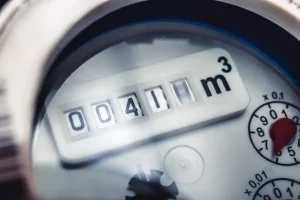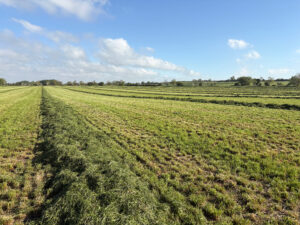With Storm Éowyn sweeping across the UK last week, many people focused on securing their homes and businesses against its extreme winds and heavy rainfall. But now that the storm has passed, you might be noticing some unusual behaviour in your plumbing that could be linked to the aftermath of the weather.
Severe storms, especially those with high winds and fluctuating air pressure, can have surprising effects on water systems. From unusual water levels in your toilets to strange smells or colder-than-usual tap water, storms like Éowyn can highlight underlying issues in your plumbing.
Here’s what you need to know about how last week’s storm might have affected your plumbing:
Water levels dropping in toilets
One of the most common oddities during and after high winds is a noticeable drop in toilet water levels. This is often caused by the drain-waste-vent system (vent stack), which helps maintain proper airflow within your plumbing.
During Storm Éowyn, the high winds likely blew into the vent stack, causing a drop in air pressure inside your plumbing system. This created a suction effect that pulled water out of toilet bowls, lowering the water levels.
If you noticed this during the storm and it hasn’t returned to normal, it’s worth investigating whether the vent stack has become obstructed or damaged by debris.
Sloshing or overflowing toilet water
During the storm, fluctuating air pressure caused by strong gusts may have led to sloshing or even minor overflows in toilet bowls. The rapid rise and fall in wind speeds creates varying pressure in the plumbing system, which can disrupt the stability of the water in the bowl.
While this is typically harmless, it might be a sign of a venting issue or underlying plumbing problem if it happened frequently or hasn’t settled since the storm.
Unpleasant smells in bathrooms or kitchens
Some people may have noticed unpleasant odours creeping into their properties during or immediately after Storm Éowyn. This often highlights hidden plumbing issues that storms bring to the surface.
The vent stack is responsible for carrying sewer gases safely out of your home or business, but during storms, strong winds can cause downdrafts that push these gases back into your property. If your toilet’s wax seal has weakened or failed, this issue could have been more pronounced.
If these odours are persisting after the storm, it may be time to have your plumbing inspected to rule out leaks or seal failures that need fixing.
Colder tap water during and after the storm
If you noticed colder-than-usual water from your taps during or after Storm Éowyn, this was likely caused by the wind cooling exposed pipes or external water tanks more quickly than usual.
While this is generally a temporary effect of stormy weather, businesses or homes with uninsulated external pipes might experience colder water for longer periods. If this is still happening, insulating any exposed pipework can help maintain more stable temperatures going forward.
Why Storm Éowyn is a reminder to inspect your plumbing
Storm Éowyn’s extreme winds and unpredictable weather patterns serve as a reminder that plumbing systems can be vulnerable to external factors. While many of the storm-related plumbing issues—like fluctuating water levels or colder water—are temporary, they may have highlighted underlying problems that need attention.
If you’ve noticed persistent issues after the storm, such as low water levels, bad smells, or excessive sloshing, these could be signs of larger problems like blocked vent stacks, failing seals, or uninsulated pipes. Addressing these now could prevent more serious problems in the future.
What to do next
Now that Storm Éowyn has passed, here are some steps you can take to ensure your plumbing is in good shape:
- Check for debris in the vent stack: Strong winds may have carried leaves, dirt, or other debris into the opening, reducing its effectiveness.
- Inspect for lingering odours: If unpleasant smells persist, have a plumber inspect the wax seals on your toilets and check for leaks in the drainage system.
- Assess your pipe insulation: If your tap water felt colder than usual, consider insulating any exposed or external pipes to maintain more stable temperatures during future weather events.
- Schedule a plumbing inspection: If you’re noticing persistent issues or want peace of mind, a professional plumber can evaluate your system for any hidden damage or leaks caused by the storm.
Being proactive can help you catch and resolve any problems early, keeping your plumbing system running smoothly, even in the wake of extreme weather.



